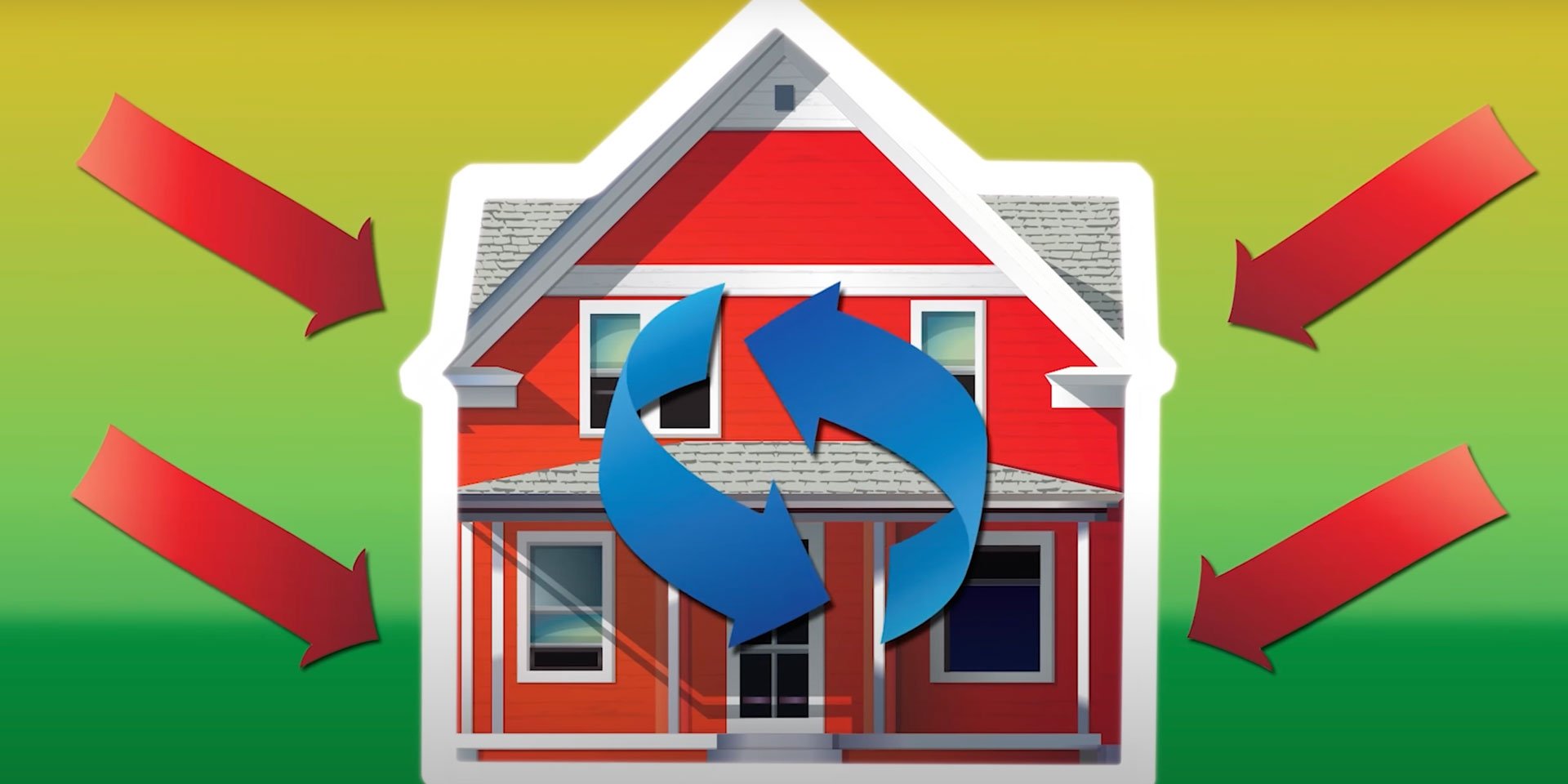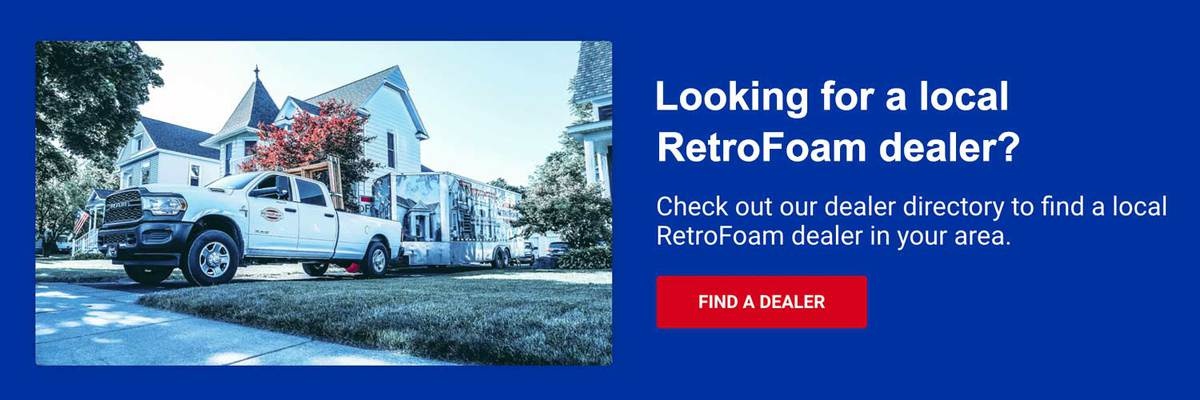What is a Building Envelope?


Understanding the concept of a building envelope is crucial for making your home energy-efficient and comfortable.
But what exactly is a building envelope, and why is it so important?
Our RetroFoam dealers across the country explain to homeowners every day why sealing the building envelope of the home is so important to achieve the comfort and energy efficiency that many are looking for.
Let’s dive into this essential aspect of home construction and energy efficiency.
Building Envelope Definition
A building envelope is a barrier that separates a building’s conditioned space (the areas you heat or cool) from unconditioned space (areas that aren’t temperature controlled), such as the outdoors or other parts of a building that aren’t heated or cooled.
Essentially, it’s what keeps the outside elements out and the indoor comfort in.
What is a Building Envelope?
Think of a building envelope as the shield that protects your home’s conditioned spaces from the harsh external environment.
In simpler terms, it’s everything that encloses the conditioned areas of your home, including walls, floors, roofs, windows, and doors. Each component plays a role in maintaining the indoor climate, making sure that the heat you generate in the winter or the cool air you produce in the summer stays where it belongs – inside your home.
Components of a Building Envelope
- Walls: This includes everything from the interior paint, drywall, or plaster to the wall studs, electrical components, insulation, sheathing, and the exterior facade.
- Roof: The roof structure, insulation, and outer roofing materials all contribute to the building envelope.
- Floors: In multi-story buildings, each floor acts as part of the building envelope.
- Windows and Doors: Properly sealed windows and doors are crucial for preventing unwanted air exchange.
- Foundation: The foundation can also be part of the building envelope, especially basements or crawl spaces.
Why is a Building Envelope Important?
The primary purpose of a building envelope is to control the flow of air, heat, and moisture between the inside and outside of your home.
Without a proper building envelope, the conditioned air you pay to heat or cool will simply escape, leading to higher energy bills and a less comfortable living environment.
Here’s why it’s important:
- Energy Efficiency: A well-sealed building envelope reduces the amount of energy required to maintain a comfortable indoor temperature. This translates to lower utility bills.
- Comfort: By minimizing drafts and maintaining a stable indoor temperature, a good building envelope enhances your overall comfort.
- Durability: It protects the structural integrity of your home by preventing moisture infiltration, which can cause mold, rot, and other damage.
How to Enhance Your Building Envelope
Enhancing your building envelope involves using materials and techniques that minimize air leaks and provide good thermal resistance.
Here are some key strategies to make the building envelope even stronger.
- Insulation: High-quality insulation, like injection and spray foam, is essential for creating an effective air seal. Foam insulation is particularly effective because it expands to fill gaps and cracks, preventing air from passing through.
- Air Sealing: Use air sealing measures such as caulking and weatherstripping around windows, doors, and other penetrations to block air leaks.
- House Wraps: House wraps are breathable materials applied to the exterior of a building to prevent air and moisture from penetrating the walls.
- Windows and Doors: Ensure windows and doors are properly installed and sealed. If your current ones are outdated, consider upgrading to energy-efficient models.
- Vapor Barriers: In some climates, vapor barriers are necessary to prevent moisture from entering the building envelope and causing damage.
A Practical Example: The Cooler Analogy
To better understand the concept of a building envelope, consider those high-performance coolers that can keep ice from melting for several days.
These coolers work so well because they have a strong building envelope. They are fully encased in plastic and foam insulation, and the lid has a gasket to prevent air from getting in or out.
This principle applies to your home: a well-sealed building envelope keeps the conditioned air inside and the unconditioned air outside.
Real-World Applications
Consider the common scenario of a house in a cold winter environment, surrounded by snow and buffeted by strong winds.
Inside, there might be a furnace, a fireplace, or a wood-burning stove generating heat. Without an established building envelope, this heat would escape, and the cold outside air would infiltrate, making it challenging to maintain a comfortable indoor temperature.
The same is true if you live in a climate with mostly extreme heat. Your air conditioner is running, you have fans throughout the house, and the blinds are closed to keep the house cool. If the building envelope isn’t sealed, all of that hot air outside will find a way inside.
By ensuring that the entire conditioned space – including the attic, basement, and all living areas – is properly enveloped, you create a barrier that keeps the heat or cool air inside. This not only enhances comfort but also ensures that the fuel and electricity used to generate that heat or cold air are not wasted.
Sealing Your Home's Building Envelope
A building envelope is a critical component of any home that plays a vital role in energy efficiency, comfort, and durability.
It acts as a shield that surrounds your entire home, keeping the air you pay to heat or cool inside where it belongs and preventing outside air from getting in. Investing in proper insulation, air sealing, and quality windows and doors can significantly improve your building envelope and allow you to enjoy a more comfortable and cost-effective living environment.
Visit our Learning Center for more information on how to enhance your home’s building envelope and control your comfort and energy bills. We have a wealth of articles, videos, and blogs to help you make informed decisions about your home.
If you’d like to discuss sealing your building envelope with an insulation contractor, check out our Dealer Finder to locate a RetroFoam dealer near you.
Related Articles
Home Insulation for Extreme Climates – Best Practices for Hot and Cold Environments
About Eric Garcia
Eric brings his knowledge and training in building science, training in spray and injection foams from the manufacturers, more than eight years installing foam insulation, as well as selling and managing in the foam insulation industry. He is also BPI and Dale Carnegie certified and has taken several building science courses, including air sealing and building envelope. Eric is the Professor of Foam on our educational YouTube series Foam University. Even when Eric is off he is usually still “working” or thinking about work, but when he can get away he enjoys camping, hiking, hunting, and woodworking.


